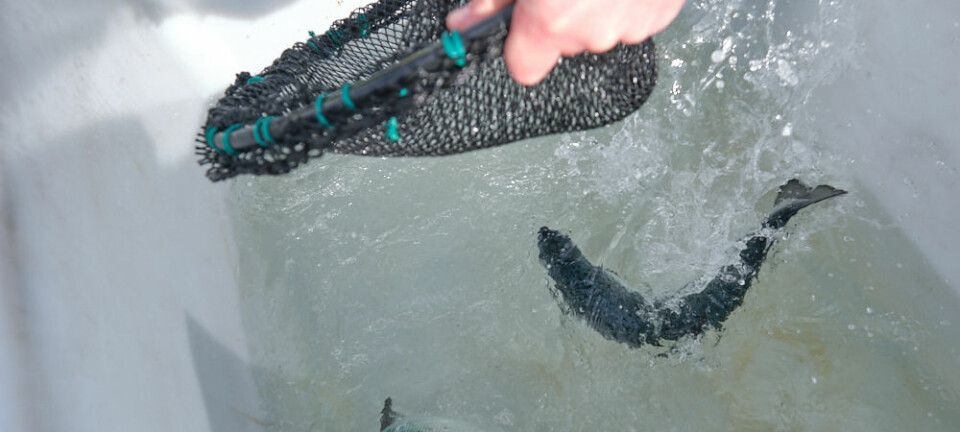
Sterile salmon parentage plays major role in future health
The right family can improve growth and health in triploids
Triploid salmon are farmed fish that have been made sterile by subjecting their eggs to pressure treatment.
"The eggs are exposed to pressure after fertilisation, which means that the fish ends up with three sets of chromosomes instead of two. This leads to triploid salmon that are sterile," says researcher Aurélien Delaval in an article on the Norwegian Institute of Marine Research's (IMR) website.
The advantage of sterile salmon is that they cannot mate with wild salmon, which reduces the risk of genetic impact on wild salmon in the event of an escape.
But there are also challenges.
"If the pressure is lower than optimal during treatment, it can lead to problems with chromosome inheritance, says Delaval.
"We thought this might be the reason why triploid salmon have poorer health and growth than other farmed fish. But the family of the fish turns out to be even more important."
Poorer health in sterile salmon
Triploid salmon often have poor health compared to regular diploid salmon.
"They are more susceptible to skeletal and heart defects, cataracts, infectious diseases and skin ulcers," says Delaval.
The researchers' hypothesis was that the cause of poor health and growth could be that the eggs were not exposed to enough pressure during the pressure treatment for it to be successful.
They have now tested this hypothesis.
What happens when the pressure is wrong?
The researchers exposed salmon from different families to five different pressure treatments: one without pressure that produces normal diploid fish, one with full pressure that produces triploid fish, and three treatments with slightly too low pressure, each with different strengths.
They could then compare how the different family groups developed after the different pressure treatments.
"The results show that low pressure treatments lead to genetic problems in many of the eggs, and the vast majority did not hatch at all," says Delaval.
Among those that survived low pressure treatments, there were both normal diploid fish where the pressure treatment had no effect, and triploid fish where the treatment worked as intended.
"We could then investigate whether the low pressure had anything to do with the health and growth of triploids, or whether family groups played a more important role."
Clear differences between triploid families
The results showed that the family to which the fish belongs has a greater impact on the health and growth of triploid salmon than the low-pressure treatment itself.
“Some triploid families did better than others,” says Delaval.
"For example, fish from some families had no or few skeletal defects, while others had more and more severe deformities. There were also clear variations in growth and mortality."
This suggests that family selection may be important in improving the health of triploid salmon.
"We will now investigate this further, so that we can gain better insight into how we can use selective breeding to strengthen the welfare of triploid salmon," says Delaval.
About the project
The TripGenWelfare project is funded by the Research Council of Norway. The goal is to investigate the genetic causes of welfare challenges in triploid salmon, including whether pressure treatment may be one of the causes.
Reference
Delaval, A., Glover, KA, Solberg, MF, Fjelldal, PG, Hansen, TJ, Pedersen, A. Ø., Sambraus, F., Garnes-Gutvik, SN, & Harvey, AC (2025). Inducing failed triploidy: The effects of sub-optimal hydrostatic pressure treatments on Atlantic salmon growth and welfare. Aquaculture, 608, 742743.



































































